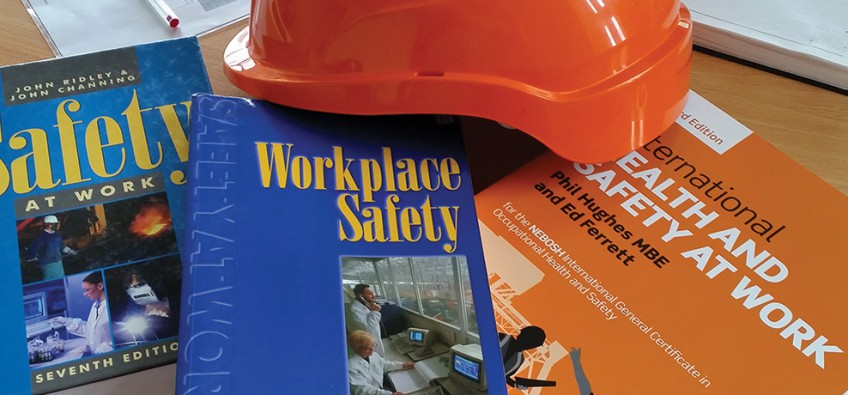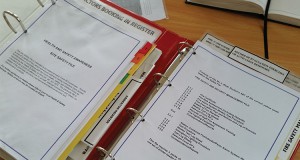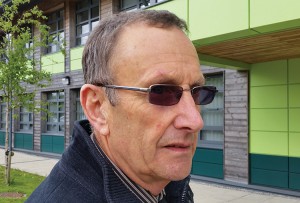Eureka Magazine Asks a Professional

Mark Nicholson of Eureka Magazine talks to Gordon Fuller of RCES (UK) Ltd. A Eureka moment and more!
For the best advice on materials handling safety, ask a professional
Are you putting your employees and your business in danger without even knowing it? To help in understanding the key processes a company should go through to make itself resilient and protect its staff, Mark Nicholson talks to an international health, safety and environmental risk analyst.
Gordon Fuller of RCES (Risk Control and Environmental Services) is an experienced consultant who has advised on workplaces across the world. Although industrial sites vary enormously, the fundamental health and safety principles apply to all. Gordon would like the materials handling professionals reading eureka to consider this question: is your organisation safe?
“Being safe is not just about protecting your workforce. It’s about protecting your business. How much is lack of safety already costing you? Even with small accidents, the cost of things like loss of productivity, damage repair, sickness leave and tarnished reputation soon mounts up. And what about a major accident? Do you think it could never happen to you?”
A phrase he often hears is ‘we’ve never had a serious accident’, implying that no further safety actions are needed. He sees this as the wrong attitude.
“Do you know what your level of risk is? Have you measured and assessed it? You may just have been lucky until now. There is risk in every situation but the important thing is to understand and control it.”
When a company comes to Gordon for professional advice, his step-by-step plan to improve safety typically covers the following.
1. Company culture assessment
“I look for background on the company and its activities, and ask some searching questions to reveal its culture and its attitude to safety. I want to know how willing it is to be helped, and why it has waited until now to seek improvement. It’s useful to know, for example, if it’s to satisfy a large customer which is insisting on better health and safety performance.”
Gordon recommends that the first meeting should be attended by the company’s managing director, as effective implementation of any strategy requires interest and pressure from the top. He checks on what safety provision already exists, such as a health and safety policy, risk assessments and a training programme, and gives some initial free advice.
2. Workplace inspection, report and action plan
An inspection highlights problems and issues, which are then addressed in a report presenting solutions, an action plan, timescales and costs. If the recommendations are agreed, Gordon likes the company to appoint someone to be his contact and to carry the work on after he has gone. Ideally this should be the safety manager, if the company is large enough to have one.
3. Health and safety policy
Rather than writing it himself, Gordon prefers to help the business create its own policy. “The company will understand the policy better, and feel ownership of it, if it has been put together internally. I can make that easy by giving relevant advice, documentation and a simple structure.”
The employee preparing the policy should be a designated ‘Competent Person’, as required by legislation. That designation can be achieved through mentoring
or formal training, both of which Gordon can provide.
4. Risk assessments
In a risk assessment, hazards shown up by the workplace inspection are measured and actions needed to reduce or avoid them are determined. Again Gordon likes to teach the company’s staff to do this themselves.
“It’s a process in which the manager and consultant can involve the workforce, and this helps to build a safety culture. While some people see health and safety as a nuisance, I find workers are usually very happy to see a safety consultant on the premises. It shows them that the company cares.”
Gordon notes that specialist areas of risk assessment include fire, COSHH (Control of Substances Hazardous to Health), workers’ state of health, vibration, noise, manual handling and hundreds more.
“It’s important to be aware of all of these, and of their interactions. For example, a fire risk assessment may identify blockage of exits by materials handling equipment as a problem, and assessments of forklift truck drivers’ health condition may identify poor sight, hearing or general fitness as issues.”
5. Accident reporting system
“The more accidents your staff report, the better equipped you are to avoid future accidents,” says Gordon. “You should also encourage workers to report ‘near misses’ and ‘causes for concern’, which will help you to prevent accidents in the first place.”
He continues, “Make it easy and comfortable for people to come forward with information – and remove any ‘blame culture’. Investigate each issue as carefully as its seriousness demands and, importantly, give your staff feedback on what you will do to reduce the risk. Then monitor the situation to see whether the changes you make are working.”
6. Training programme
You should have a detailed training plan and record for every member of staff. As well as regular refresher training, Gordon stresses that further training should be given in response to changes such as new equipment or activities, promotion or long absence.
He adds, “Safety training is important at all levels. Board members and shop floor staff should be helped to appreciate the importance of safety practices, but the middle managers are the people who need most training. Their actions and decisions will have the greatest effect.”
Gordon Fuller is a Fellow of the International Institute of Risk and Safety Management, a Fellow of the Royal Society for Protection of Health and, through the Institute of Occupational Safety and Health, a Chartered Safety Practitioner.
From his base in Cornwall, UK, he travels the world advising on workplace safety. The most extreme working environments he has visited include oilfields on the Iraqi border, where risk assessments cover threats like kidnapping and assassination as well as the more typical hazards.
As an example of the variety of his work, he once spent time in the African bush advising a wildlife photographer on how to minimise risk when tracking lions and other large animals.



